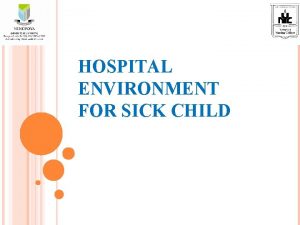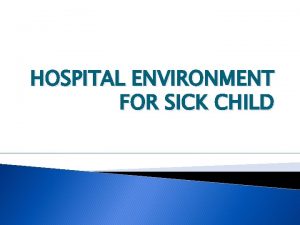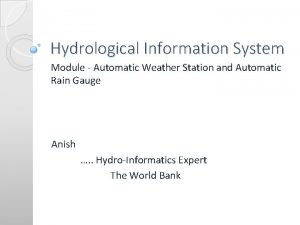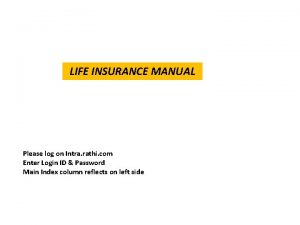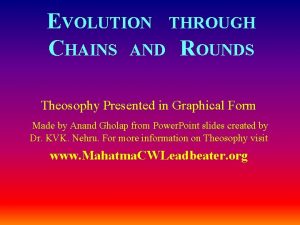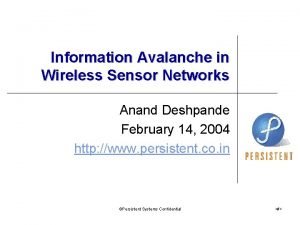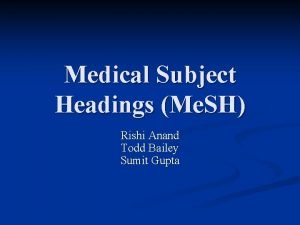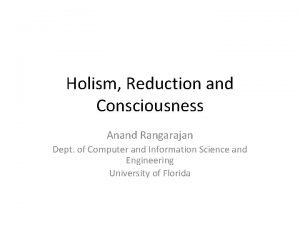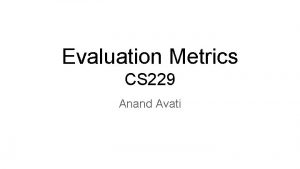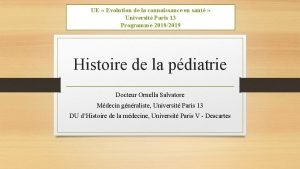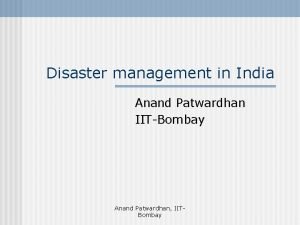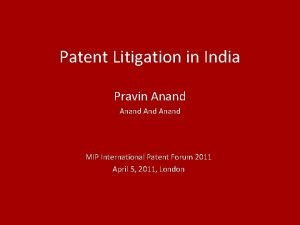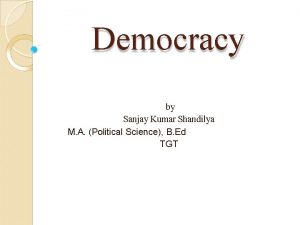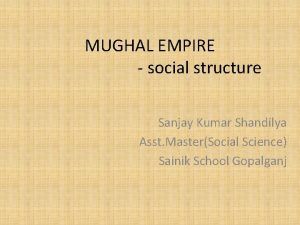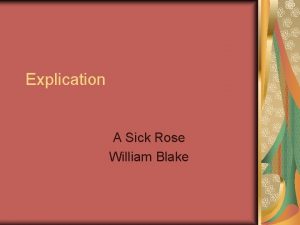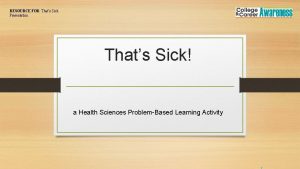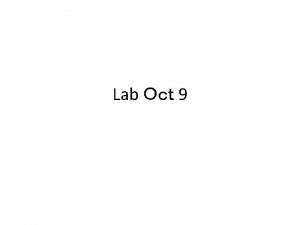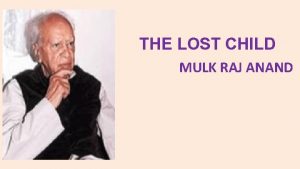IDENTIFICATION OF SICK CHILD Anand Shandilya SICK CHILD


















- Slides: 18

IDENTIFICATION OF SICK CHILD Anand Shandilya

SICK CHILD or CRITICALLY ILL CHILD v Is a child who is in a clinical state which may result in respiratory or cardiac arrest or severe neurological complication , if not recognized & treated promptly.

v It is important to identify a child with physiological derangement in its early stages when signs are subtle. v GOLDEN HOUR concept applies to all children with illness presenting as EMERGENCY

v Early recognition of a critically ill child requires a systematic & rapid clinical assessment with background knowledge of age appropriate physical signs & developmental level. v The process of examining a child is known as RAPID CARDIOPULMONARY ASSESSMENT. v 30 secs with practice.

Selected conditions require a rapid cardiopulmonary assessment v RR >60 v HR: >180 or <80(under 5 yrs) >160 or <60(over 5 yrs) v Respiratory distress-increased work of breathing (retractions, nasal flaring, grunting). v Trauma , Burns totaling >10% of surface area. v Cyanosis

v Failure to recognize parents v Diminished level of consciousness– unusal irritability, or lethargy. v Seizures v Fever with petechiae

Simple & quick way of assessment v. Appearance of child v. Airway v. Breathing v. Circulatory status

APPEARANCE OF CHILD v Basically denotes NEUROLOGICAL STATUS. v It is determined by the o 2 & blood supply to the brain which is dependent on cardiopulmonary status and structural integrity of the brain.

v 1 ALERTNESS: Changes in level of conscious can also be rapidly assessed by: v. A wake v. Responsive to V oice v. Responsive to P ain v. U nresponsive

Distractibility or consolability by parent. v Eye contact with parent or physician –normally at 2 mon. failure to do this is an EARY OMINOUS SIGN of cortical hypoperfusion &brain dysfunction. v SPEECH /CRY—normal/moaning/high pitched. v MOTOR ACTIVITY normal movements of limb, trunk, neck v

v COLOR of SKIN : pink, pale/cyanosed/mottled/ashen grey. v SEIZURE activity v POSTURING v MUSCLE TONE-limp child bad sign. v Pupil size

AIRWAY v Whether it is open &clear or maintainable with adjuncts like airways suction , positioning or unmaintainable without intubation.

BREATHING v RESPIRATORY RATE: Tachypnoea is an early sign of resp distress. Tachypnoea with out IWB –shock, heart disease & acidosis. Slow/irregular RR in a acutely ill child is OMINOUS. v WORK OF BREATHING v AIR ENTRY.

CIRCULATORY STATUS HEART RATE: Tachycardia Bradycardia in a critically ill child OMINOUS. v PULSES: Central/Peripheral present/absent volume pulse pressure Loss of central pulse is a premorbid sign is to be treated as cardiac arrest. v

v SKIN PERFUSION: Temperature color CFT

v ORGAN PERFUSION: Brain perfusion Renal perfusion v BLOOD PRESSURE

v PULSE OXIMETRY: o 2 saturation assessment is an important adjunct to identify oxygenation state in acutely ill child.

 Anand shandilya
Anand shandilya The sixth sick sheik's sixth sheep's sick lyrics
The sixth sick sheik's sixth sheep's sick lyrics Central pocket vs plain whorl
Central pocket vs plain whorl Hospitalization of sick child
Hospitalization of sick child Hospital environment for sick child
Hospital environment for sick child Recognition of a sick child
Recognition of a sick child Rummy glle
Rummy glle Anand gujarat
Anand gujarat 1. intra.rathi.com
1. intra.rathi.com Anand natarajan dtu
Anand natarajan dtu Anand gholap
Anand gholap Anand industrial enterprises
Anand industrial enterprises Dr anand annamalai
Dr anand annamalai Anand deshpande house
Anand deshpande house Dr rishi anand
Dr rishi anand Anand rangarajan
Anand rangarajan Anand avati
Anand avati Anand rangarajan
Anand rangarajan Kanwaljeet anand
Kanwaljeet anand



